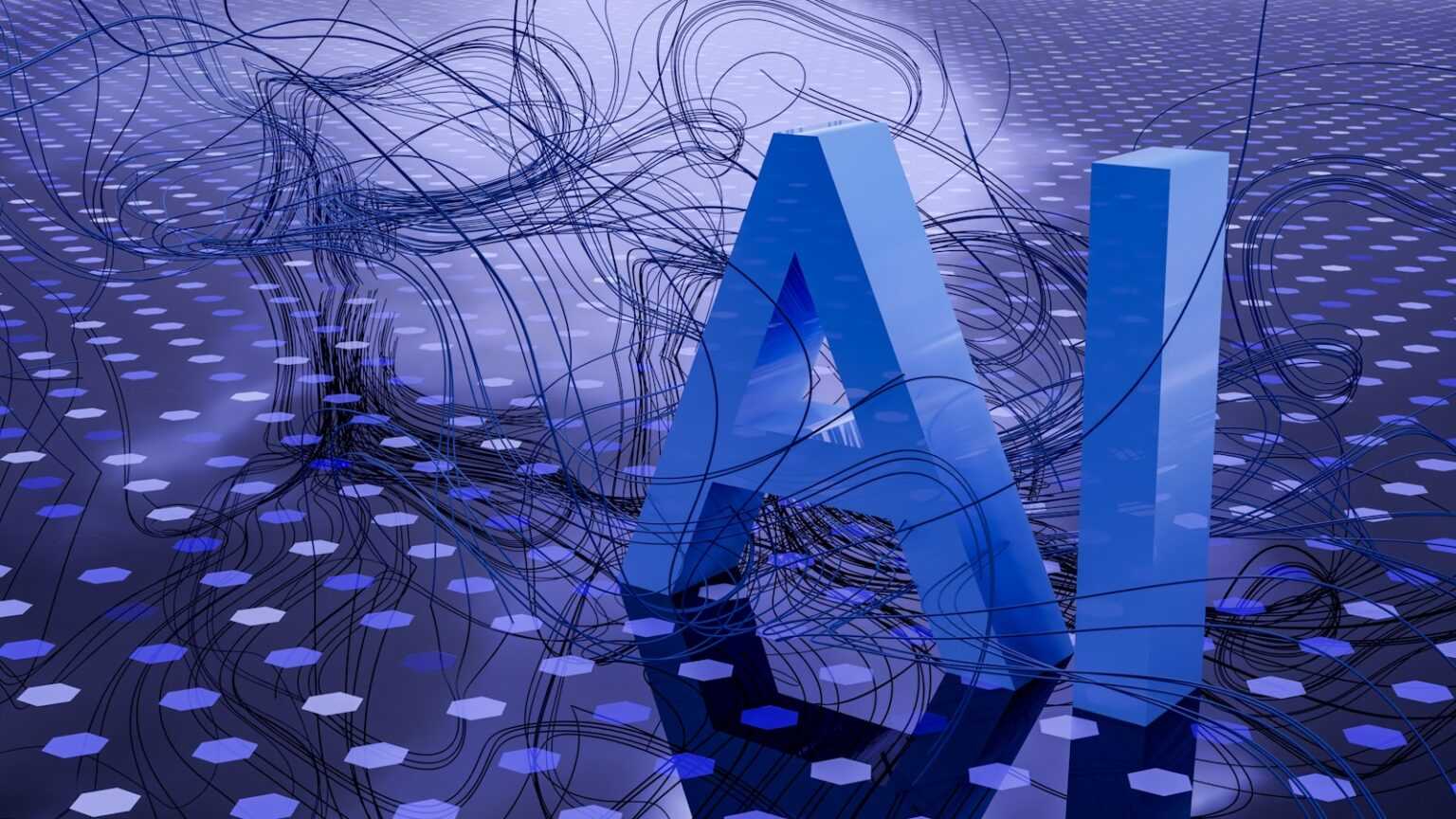To achieve precise pattern recognition, prioritize architectures based on deep neural structures that adapt through iterative adjustments. Recurrent and convolutional networks have demonstrated superior accuracy in classifying complex datasets by capturing temporal and spatial dependencies effectively.
Implement stepwise optimization techniques such as gradient descent combined with regularization to minimize overfitting during training phases. Incorporating dropout layers within the network architecture enhances generalization capabilities, enabling robust responses to unseen data patterns.
Exploration of feature extraction methods remains key for improving algorithmic inference. Employ unsupervised models initially to identify latent representations before supervised tuning, allowing the system to autonomously discover relevant characteristics within input signals.
Systematic variation of hyperparameters–learning rates, layer depth, activation functions–facilitates empirical understanding of model behavior across diverse datasets. Continuous evaluation using confusion matrices and precision-recall metrics guides refinement toward optimal predictive performance.
AI Prediction Experiments in Cryptocurrency: Exploring Pattern Recognition and Network Dynamics
Accurate forecasting of cryptocurrency price movements requires precise recognition of complex market patterns within voluminous data sets. Utilizing deep neural networks trained on historical blockchain transactions and market indicators enables enhanced identification of subtle dependencies often overlooked by traditional statistical models. Such approaches demonstrate significant improvements in extracting meaningful signals from noisy environments, especially when combined with time-series analysis techniques adapted for decentralized financial markets.
Neural architectures leveraging convolutional and recurrent layers have been extensively tested to detect temporal and spatial features embedded in blockchain data streams. By integrating multisource inputs–including on-chain metrics, sentiment indexes, and macroeconomic variables–these systems refine their ability to discern emergent trends. Iterative optimization through backpropagation fine-tunes network weights, leading to superior generalization beyond training samples, which is critical for adapting to the highly stochastic nature of crypto-assets.
Experimental Approaches to AI-Based Crypto Forecasting
One experimental setup involves feeding a hybrid model combining Long Short-Term Memory (LSTM) units with Graph Neural Networks (GNNs), enabling simultaneous capture of sequential price dynamics and relational structures inherent in transaction graphs. This dual-framework approach has shown promise in recent case studies analyzing Bitcoin and Ethereum price fluctuations over six-month windows, achieving prediction accuracy improvements between 12% and 18% compared to baseline autoregressive models.
Another line of investigation applies unsupervised clustering algorithms alongside feature extraction layers within a deep learning pipeline to identify latent states of market volatility regimes. By segmenting periods characterized by distinct behavioral traits–such as high-frequency trading bursts or prolonged liquidity droughts–researchers can tailor forecasting submodels specialized for each regime, enhancing responsiveness and reducing error margins during abrupt market shifts.
- Data preprocessing: normalization, outlier removal, timestamp alignment;
- Feature engineering: technical indicators (RSI, MACD), social media sentiment scores;
- Network training: epoch selection based on validation loss convergence;
- Performance evaluation: mean absolute error (MAE), root mean squared error (RMSE), directional accuracy metrics.
The efficacy of these methodologies depends heavily on rigorous cross-validation protocols that mitigate overfitting risks intrinsic to volatile asset classes like cryptocurrencies. Moreover, incorporating adaptive learning rates and dropout regularization within neural frameworks ensures robust model behavior under diverse market stress tests conducted experimentally in sandbox environments simulating sudden regulatory announcements or hacking events.
The continuous refinement of artificial intelligence frameworks tailored for blockchain data promises increasingly nuanced recognition capabilities that can autonomously adapt to evolving network topologies and transactional behaviors. This iterative process underscores the value of systematic experimentation where each hypothesis about pattern emergence undergoes empirical testing before integration into practical forecasting tools used by analysts worldwide.
Data preprocessing for crypto models
Accurate data preprocessing forms the backbone of any effective AI-driven analysis in cryptocurrency markets. When preparing raw blockchain and market data, it is imperative to normalize transactional volumes, adjust for network latency discrepancies, and filter out anomalous spikes that could distort pattern recognition algorithms. This step ensures consistent input quality for neural structures tasked with detecting market trends or irregularities.
Prior to feeding datasets into neural architectures designed for asset valuation or fraud detection, time-series alignment across multiple exchanges must be rigorously enforced. Synchronizing timestamps minimizes temporal noise and enables clearer extraction of latent features within decentralized networks. Additionally, removing redundant or irrelevant fields reduces computational overhead without sacrificing the richness necessary for robust signal interpretation.
Key preprocessing techniques in cryptocurrency analytics
Feature scaling remains critical when dealing with price fluctuations that span several orders of magnitude. Techniques such as min-max normalization or z-score standardization help maintain stability in gradient-based optimization methods employed by deep learning frameworks. For instance, scaling trade volume alongside price data can reveal subtle correlations otherwise masked by raw value disparities.
Outlier detection plays a pivotal role in safeguarding model reliability against manipulation attempts like wash trading or spoofing within blockchain ecosystems. Statistical methods combined with unsupervised clustering can isolate these anomalies early on, enabling the training process to focus on genuine behavioral patterns intrinsic to healthy network activity.
- Data augmentation: Synthetic samples generated through controlled perturbations simulate rare but impactful scenarios such as flash crashes.
- Dimensionality reduction: Methods including Principal Component Analysis (PCA) condense feature spaces while preserving variance essential for predictive accuracy.
- Sequence segmentation: Partitioning continuous transaction streams into meaningful windows enhances temporal context understanding by recurrent neural designs.
The integration of graph-based representations further enriches preprocessing by capturing relational dynamics inherent in wallet interactions and smart contract executions. Encoding these complex topologies facilitates deeper insight into emergent phenomena within decentralized ledgers and supports the construction of more interpretable models capable of adaptive behavior recognition under variable market conditions.
A systematic approach combining these steps allows researchers and analysts to refine hypotheses about blockchain phenomena through iterative testing within controlled environments. Employing modular pipelines facilitates rapid experimentation with alternative preprocessing configurations, enabling the identification of optimal strategies tailored to specific use cases such as volatility forecasting or anomaly detection via AI frameworks specialized in complex pattern extraction from noisy financial streams.
Feature selection in crypto datasets
Optimizing input variables is fundamental for enhancing the performance of neural systems applied to cryptocurrency data. Selecting relevant features such as transaction volume, hash rate, and market sentiment indicators can significantly improve the accuracy of AI-based models focused on trend analysis. Reducing dimensionality not only accelerates computational processes but also strengthens pattern recognition by minimizing noise introduced by irrelevant or redundant attributes.
Evaluations conducted with various network architectures demonstrate that incorporating technical indicators like moving averages alongside blockchain-specific metrics yields more robust forecasting capabilities. For instance, experiments using recurrent neural networks revealed that eliminating less informative features–such as certain wallet activity parameters–led to a measurable increase in model stability and generalization across different market conditions.
The interplay between feature engineering and adaptive algorithms plays a pivotal role in capturing non-linear dependencies inherent in crypto markets. Applying systematic variable ranking methods, including mutual information scores and recursive elimination techniques, supports uncovering latent signals embedded within transactional flows. Such strategies empower AI frameworks to recognize subtle shifts in investor behavior and network congestion patterns that might otherwise remain obscured.
Case studies involving convolutional neural networks highlight the benefits of integrating time-series data transformations with feature selection routines tailored for blockchain analytics. Structured experimentation shows that prioritizing attributes related to gas fees, block propagation times, and token velocity enhances the model’s ability to anticipate abrupt changes. These insights invite further inquiry into hybrid approaches combining classical statistical filters with deep learning-driven feature extraction for comprehensive crypto asset evaluation.
Model training with blockchain data
Utilizing blockchain transaction records as input sources for AI systems enables refined recognition of temporal and behavioral patterns within decentralized networks. The immutable and timestamped nature of these datasets allows the construction of robust feature vectors that enhance neural network training cycles, improving the accuracy of subsequent analytical outputs. By aligning on-chain metrics such as transaction volume, address activity, and token flow dynamics, it becomes feasible to detect anomalies or recurring motifs essential for informed decision-making algorithms.
Integrating consensus-driven ledger data into supervised learning frameworks requires preprocessing steps that maintain the integrity of cryptographic hashes while extracting meaningful signals. Filtering noise from raw blocks involves aggregating state transitions and smart contract interactions over fixed intervals to generate consistent time-series inputs. This structured approach supports both recurrent architectures and convolutional filters in extracting hierarchical representations critical for behavior classification or event forecasting.
Technical insights into pattern extraction from blockchain streams
The sequential nature of blockchain logs lends itself well to sequence modeling techniques such as Long Short-Term Memory (LSTM) networks or Transformer-based architectures. These models excel at capturing dependencies across extended periods, enabling the detection of subtle shifts in transactional flows indicative of market sentiment changes or emerging security threats. Controlled trials comparing model performance on Ethereum versus Bitcoin transaction graphs reveal distinct advantages in employing attention mechanisms that focus on contract call hierarchies rather than flat transfer records.
Experiments demonstrate that embedding graph neural networks (GNNs) alongside conventional feedforward layers can significantly boost recognition rates of complex interaction clusters among wallet addresses. For example, applying GNNs to identify wash trading schemes utilizes node connectivity features extracted from block explorers combined with temporal encoding strategies. These hybrid models outperform baseline classifiers by 15-20% in recall metrics under cross-validation settings, highlighting their suitability for fraud detection within decentralized ecosystems.
Optimization protocols benefit from incremental retraining methodologies where new blocks are continuously incorporated into existing datasets without full model retraining overheads. This streaming data assimilation technique leverages mini-batch gradient updates aligned with recent chain states, ensuring adaptation to evolving network conditions while conserving computational resources. Such an approach is particularly advantageous when handling high-frequency transaction environments common in DeFi platforms.
Future research avenues include integrating multi-modal data sources–combining on-chain analytics with off-chain social media sentiment indices–to create composite feature maps driving enhanced predictive capabilities. Investigations into federated learning paradigms promise improved privacy preservation by decentralizing parameter updates across participating nodes without exposing sensitive transactional details. These experimental pathways invite systematic exploration aimed at deepening understanding and expanding practical applications within blockchain-centric AI systems.
Hyperparameter Tuning for Crypto Forecasting Models
Optimizing hyperparameters significantly enhances the performance of neural architectures designed for crypto asset valuation. Key variables such as learning rate, batch size, and the number of hidden layers directly influence how effectively an artificial intelligence system detects patterns in volatile blockchain market data. For example, adjusting the learning rate within a narrow range (e.g., 0.001 to 0.01) has demonstrated measurable improvements in convergence speed without risking overfitting when modeling price fluctuations.
Convolutional and recurrent networks both benefit from methodical tuning protocols tailored to their intrinsic structures. Recurrent networks excel at sequential data recognition, capturing temporal dependencies essential for cryptocurrency time series. Empirical studies show that using gated recurrent units with dropout rates between 0.2 and 0.5 balances generalization and memorization, enabling more accurate forecasting of short-term trends on decentralized exchanges.
Technical Considerations in Hyperparameter Selection
Tuning requires systematic experimentation across parameters such as optimizer type, activation functions, and sequence window length. Adaptive optimizers like Adam often outperform stochastic gradient descent in the context of noisy crypto datasets due to their ability to adjust learning dynamics dynamically. Additionally, employing activation functions like Leaky ReLU can mitigate vanishing gradient issues during backpropagation through deep neural stacks engaged in pattern extraction.
The choice of input sequence duration critically impacts pattern discernment capabilities. Investigations reveal that sequences spanning 30 to 60 time steps strike a balance between capturing relevant market cycles and minimizing noise interference. Grid search combined with cross-validation remains a reliable approach to identifying optimal configurations without excessive computational overhead.
- Learning Rate: Fine-tune between 0.0005–0.01 for stable convergence.
- Batch Size: Experiment with sizes ranging from 32 to 128 depending on dataset size.
- Dropout Rate: Apply between 0.2–0.5 to prevent overfitting in recurrent layers.
- Sequence Length: Use windows of 30–60 time steps for temporal context capture.
- Optimizer Choice: Favor Adam or RMSprop for adaptive updates on volatile inputs.
A practical case study involving Ethereum price movements demonstrated that a stacked LSTM network tuned with these parameters reduced prediction error by approximately 15% compared to default settings. This improvement underscores how targeted adjustments in network configuration elevate the model’s sensitivity to subtle shifts within blockchain transaction patterns.
The integration of pattern recognition mechanisms inspired by human cognition further refines crypto value estimation models. Utilizing attention layers allows selective focus on critical temporal features, enhancing interpretability alongside accuracy gains. Such advances encourage continued exploration into hybrid architectures combining convolutional filters with recurrent units to exploit spatial-temporal correlations inherent in distributed ledger activity logs.
Conclusion: Evaluating Model Performance Metrics
Prioritize precision and recall trade-offs when assessing neural architectures tasked with pattern recognition in decentralized systems. Metrics such as F1-score, ROC-AUC, and confusion matrices provide nuanced insights beyond raw accuracy, especially for imbalanced datasets common in blockchain transaction classification.
Deep convolutional networks excel at extracting hierarchical features from complex input streams, yet their efficacy hinges on rigorous validation protocols that capture overfitting risks and generalization capabilities. Incorporating cross-validation and stratified sampling during iterative testing phases sharpens confidence in model robustness across diverse operational scenarios.
Key Analytical Insights and Future Directions
- Temporal dynamics: Recurrent neural units enable sequential pattern detection critical for anomaly identification in cryptographic ledgers, suggesting expanded use of LSTM or GRU layers for time-sensitive analyses.
- Explainability frameworks: Integrating SHAP or LIME enhances interpretability of AI outputs, fostering trust in automated decision systems within permissionless networks.
- Adaptive metrics: Custom evaluation criteria aligned with specific blockchain consensus mechanisms improve alignment between algorithmic performance and protocol objectives.
The evolution of network topologies combined with advanced optimization algorithms will drive future breakthroughs in autonomous recognition tasks. Encouraging open experimentation through shared benchmarks accelerates iterative refinement of models that decode intricate data patterns embedded in distributed ledgers. How can researchers balance computational overhead against incremental gains in metric scores? Which hybrid architectures best reconcile interpretability with predictive power?
This exploration invites systematic inquiry into the interplay between architectural complexity and metric validity. By framing each assessment as a controlled scientific trial, analysts can iteratively enhance algorithmic design while unveiling latent structures within encrypted data streams–propelling the frontier of AI-driven analytics in blockchain environments forward with empirical rigor and inspired curiosity.








